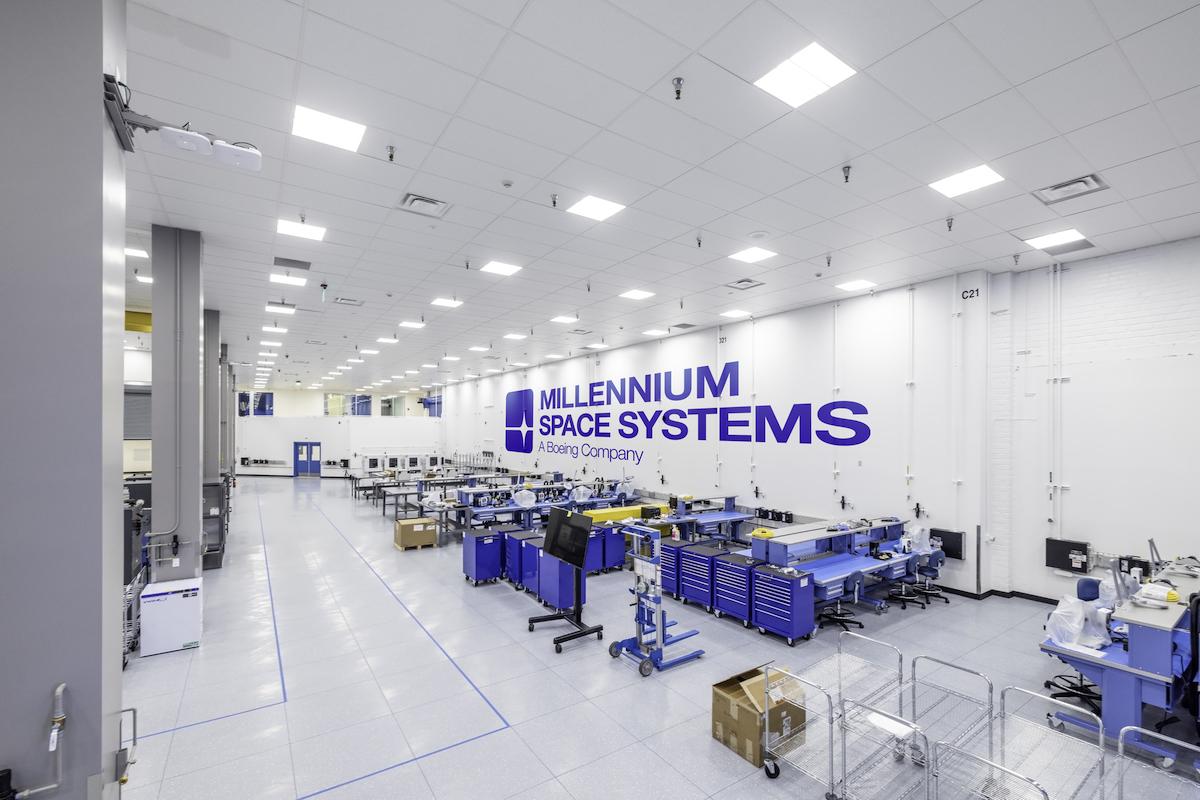
Eyeing fast-growing demand for small satellite constellations from both defense and commercial customers, Boeing subsidiary Millennium Space Systems is opening a new “high-throughput” small satellite production facility.
The factory is housed within Boeing’s 1 million-ft.2 satellite production facility in El Segundo, California. Millennium declined to say how many satellites the factory could turn out annually. At present the company produces about 60 small satellites a year.
Initial operating capability for the small satellite production facility was reached in September 2021. Millennium expects the factory to reach full operational capability in late 2022, said Jason Kim, the company’s CEO, on a March 29 tour of the facility.
Millennium plans to build small satellites of different security levels—unclassified products for commercial use alongside more sensitive defense products—on the same pulse assembly line by segmenting national security-related production elements into different rooms. Satellite integration and testing, including thermal vacuum and vibration testing, will also be done on site.
The new facility will lean heavily on advanced manufacturing equipment and methods, including 3D printing and model-based systems engineering. Millennium builds about 80% of its satellite components in house; including reaction wheels, gyrometers and flight computers.
Guidance, navigation and control are “big differentiators” for the company, Kim said. They allow Millennium’s satellites to host high-precision Earth observation instruments which are valued by the manufacturer’s defense customers.
“We focus on high performance satellites that are able to point and slew quickly,” Kim said.
That capability has value for the commercial Earth observation satellite market too, he added. “You can take more observations per pass—more observations per pass means more revenue,” Kim said. “You’re going to see more commercial constellations from us.”
Ultimately, Boeing sees Millennium’s small satellite constellations as complementary to its larger geostationary satellites, according to Ryan Reid, president of Boeing Commercial Satellite Systems.
Boeing is looking at different sorts of crosslink technologies to connect low Earth orbit, medium Earth orbit and geostationary orbit satellites, but has not settled on one, Reid said. In 2019, the company invested in Isotropic Systems, maker of an optical beam-forming technology that allows ground terminals to connect with satellites in multiple orbits simultaneously.
“The growth path is for fully networked, integrated multi-orbit systems,” Reid said. “We definitely see a transition to a networked ecosystem in space.”





